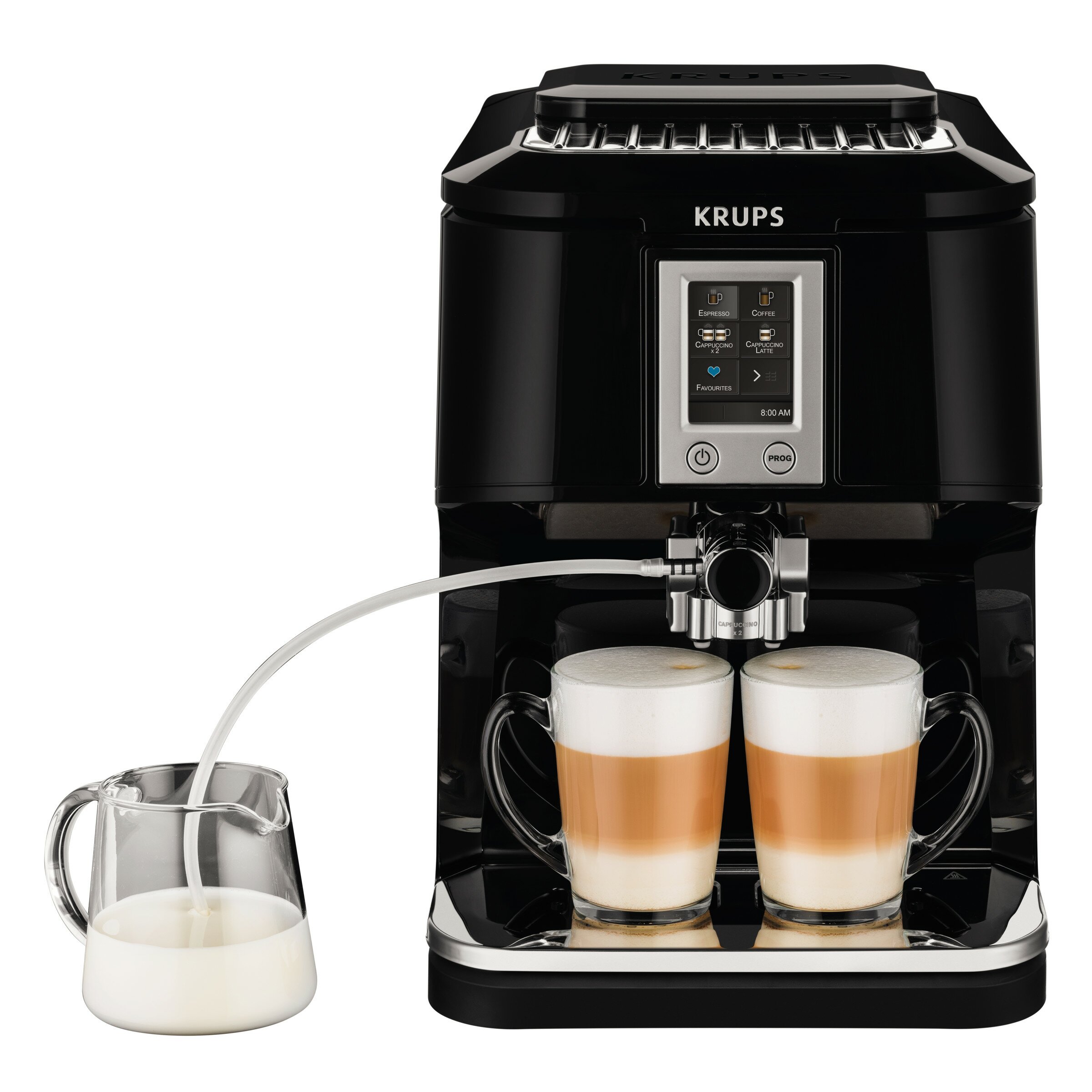Cappuccino began in Italy where it is still a delight of the morning routine. The Italians can tell a tourist from a native though because only a tourist will order a cappuccino after noon. It is considered a morning beverage in Italy, but in other regions of the world it is served throughout the day.
The Steps to Making a Cup of Cappuccino
Cappuccino is a tricky drink to master. It is divided into 3 parts: the espresso, the steamed milk, and the frothy or foamy milk. These layers created at the perfect proportions, textures and temperatures are what make the ideal cup of cappuccino. It used to take highly skilled chefs to create this concoction, but with the advent of the cappuccino machine, most of the guess work is taken out of it.
How Cappuccino Machines Work
Cappuccino machines are designed to brew and dispense the espresso coffee. Many can also do the step of grinding the coffee beans for an ultra fresh brew. When the espresso has been dispensed into the cup, the machine then adds steamed milk. These two steps are relatively easy, even though milk temperature and the strength of the espresso are important ingredients in this recipe.
The frothy milk is the most difficult part for humans or machines to get just right. The objective is to create a light foam, just the right temperature and with the optimal number air bubbles. This micro-foam stays warm when added to a cup of espresso and creates sweeter tasting foam than more dense concentrations of milk. This helps offset the bitterness of the espresso.
Makers of Cappuccino Makers
Bunn is one manufacture of some of the best cappuccino makers in the world. They are used in restaurants and homes alike because they are durable and able to maintain the ratios and temperatures required for great cappuccino. The restaurant models have up to 5 spouts for instant cappuccino and can cost close to $2,000. For home use, other brands provide more affordable options.
The Nespresso machines for home use costs about $400. This is a versatile machine that makes espresso but has plumbing for water to steam and a milk dispenser to create the foam for cappuccino or latte.
There are many other brands available of home and commercial cappuccino makers. Prices are more than a regular coffee maker because of the specialty features. Home machines generally dispense one or two small cups of coffee, while commercial grade machines can handle 5 cups simultaneously.
The Right Recipe For You
Unlike other types of coffee, espresso and cappuccino are very specific in terms of flavour, consistency and ingredients. One cup of coffee from one particular machine may taste just fine to one person, while the next person thinks it is weak or bitter. With espresso and cappuccino, there is a right taste and a wrong taste. You either like it or you don’t, but don’t mess with the recipe!
Keywords:
Cappuccino Machines, espresso maker, coffee makers,
The Steps to Making a Cup of Cappuccino
Cappuccino is a tricky drink to master. It is divided into 3 parts: the espresso, the steamed milk, and the frothy or foamy milk. These layers created at the perfect proportions, textures and temperatures are what make the ideal cup of cappuccino. It used to take highly skilled chefs to create this concoction, but with the advent of the cappuccino machine, most of the guess work is taken out of it.
How Cappuccino Machines Work
Cappuccino machines are designed to brew and dispense the espresso coffee. Many can also do the step of grinding the coffee beans for an ultra fresh brew. When the espresso has been dispensed into the cup, the machine then adds steamed milk. These two steps are relatively easy, even though milk temperature and the strength of the espresso are important ingredients in this recipe.
The frothy milk is the most difficult part for humans or machines to get just right. The objective is to create a light foam, just the right temperature and with the optimal number air bubbles. This micro-foam stays warm when added to a cup of espresso and creates sweeter tasting foam than more dense concentrations of milk. This helps offset the bitterness of the espresso.
Makers of Cappuccino Makers
Bunn is one manufacture of some of the best cappuccino makers in the world. They are used in restaurants and homes alike because they are durable and able to maintain the ratios and temperatures required for great cappuccino. The restaurant models have up to 5 spouts for instant cappuccino and can cost close to $2,000. For home use, other brands provide more affordable options.
The Nespresso machines for home use costs about $400. This is a versatile machine that makes espresso but has plumbing for water to steam and a milk dispenser to create the foam for cappuccino or latte.
There are many other brands available of home and commercial cappuccino makers. Prices are more than a regular coffee maker because of the specialty features. Home machines generally dispense one or two small cups of coffee, while commercial grade machines can handle 5 cups simultaneously.
The Right Recipe For You
Unlike other types of coffee, espresso and cappuccino are very specific in terms of flavour, consistency and ingredients. One cup of coffee from one particular machine may taste just fine to one person, while the next person thinks it is weak or bitter. With espresso and cappuccino, there is a right taste and a wrong taste. You either like it or you don’t, but don’t mess with the recipe!
Keywords:
Cappuccino Machines, espresso maker, coffee makers,





 0Comments
0Comments